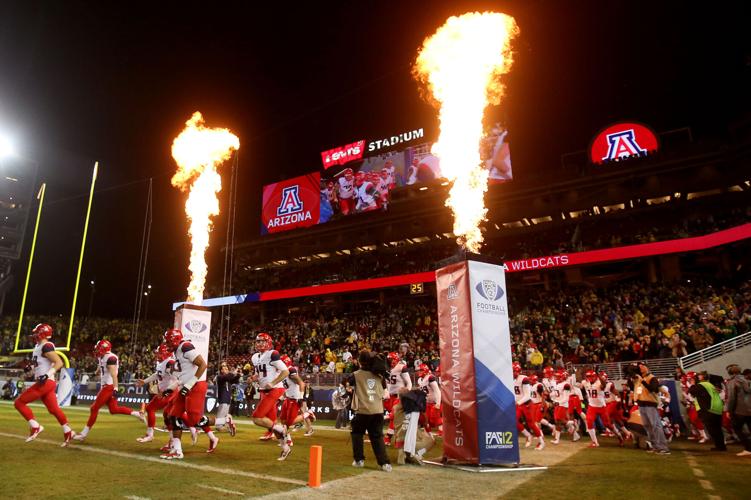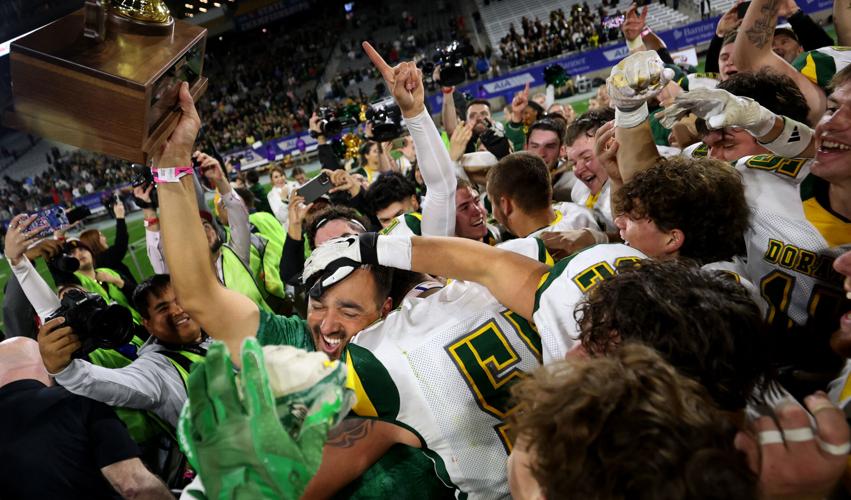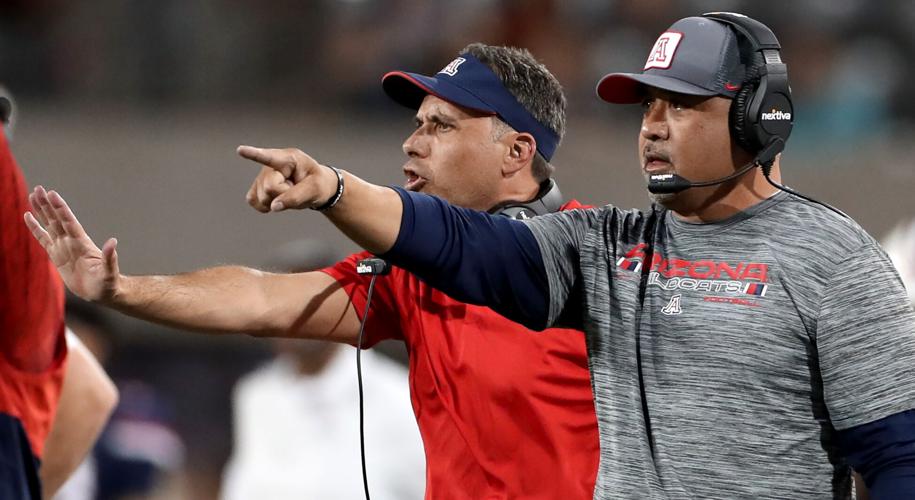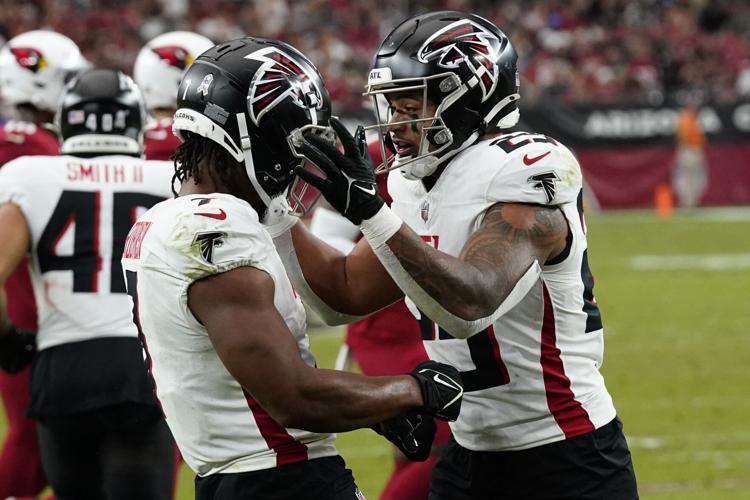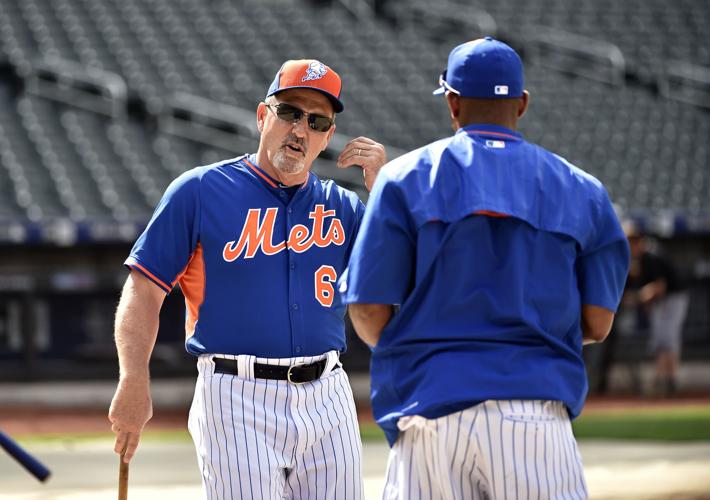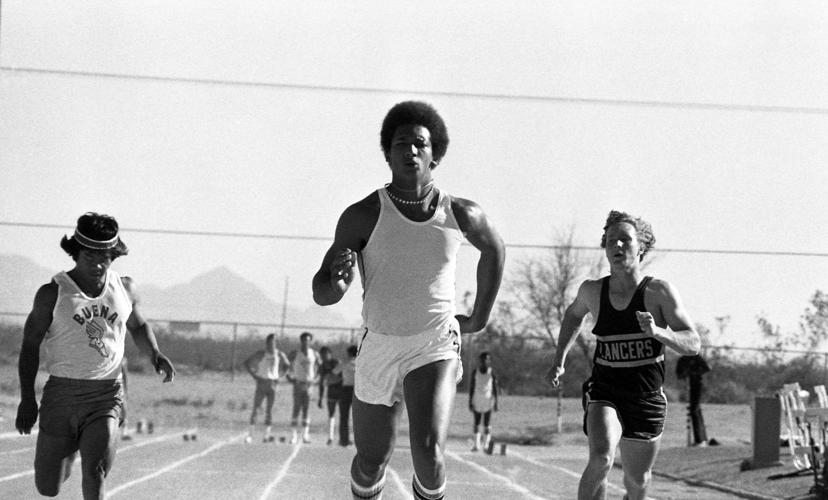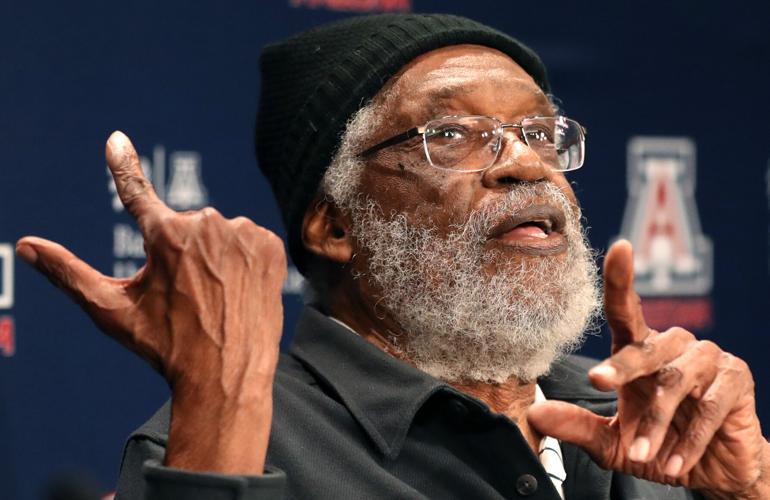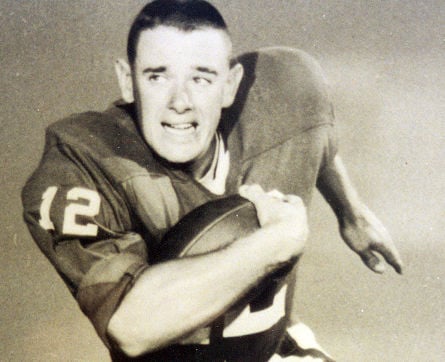The Star's longtime columnist on Arizona football foregoing Pac-12 mediocrity for Big 12 promise, Dustin Peace's state title bookends at Canyon del Oro, UA's valuable Polynesian pipeline, Wildcat hoops legend Ernie McCray's personal NIL perspective and more.
UA gained by leaving WAC for Pac-12 — but not so much on gridiron

Greg Hansen is the longtime sports columnist for the Arizona Daily Star and Tucson.com.
A half-century ago, Arizona president John Schaefer began an aggressive charge to get the UA out of the WAC, out of a league with country bumpkins UTEP and New Mexico, and into the Pac-8 aside glamor sports franchises USC and UCLA.
Arizona was ready for a bigger stage. The Wildcats of the mid-70s would produce successive 9-2 football seasons, expand Arizona Stadium from 40,000 to 56,000 seats, win the NCAA baseball championship, and routinely fill all 14,000 seats at its new basketball palace, McKale Center.
The jump from WAC to Pac-10 created a tsunami of eager anticipation.
Now, with 45 seasons of Pac-12 football documented in a book whose final chapter was written last week, you may wonder: how did it work out?
Arizona never won a Pac-12 championship, never played in a Rose Bowl. It never even produced the All-Pac-12 quarterback, a head-turning 0 for 45.
Arizona won a sad 44 percent of its Pac-12 conference games.
The UA's gains of jumping from the WAC to the Pac-12 came in other areas, notably basketball, softball, baseball, golf and swimming, all of which produced national championships.
Five months away from membership in the Big 12, are the Wildcats in a better football place than they were in 1978?
Keep this in mind: Arizona finished 40 games under .500 in its Pac-10/Pac-12 football career. For context, here is a review of the complete conference records from the Pac-10 era on:
• USC, 259-112-5
• Washington, 228-147-3
• Oregon, 227-148-2
• UCLA, 211-164-5
• Stanford, 197-190-3
• ASU, 188-180-4
• Arizona, 161-201-6
• WSU, 152-222-4
• Cal, 144-233-5.
• Oregon State, 122-253-5
(Expansion teams Utah, 65-48, and Colorado, 28-84, joined the league in 2011).
From 1962-77, the WAC Wildcats won 54% (50-43) of their conference football games. The Pac-12 Wildcats won 44%. Is it realistic to think Arizona can jump to a 60% winning percentage of its Big 12 football games? Maybe 65%? It would be ground-breaking turf.
Because there is no blueblood-type football program in the newly arranged Big 12 — no USC, no Oregon, no Washington — Arizona gets to start over in a league without future Hall of Fame coaching giants like Frank Kush, John Robinson, Terry Donahue or Don James, as was the case in 1978. The ranking Big 12 coach? Utah's Kyle Whittingham, no contest. After that? Do you even know the name of a coach at West Virginia, Baylor or Kansas State?
I'm not underestimating the Big 12's football prowess. Many of the early Top 25 projections for next season include Kansas State, Oklahoma State, Kansas, Utah, Iowa State and West Virginia. That's almost half the league. And Tucsonans should be fully aware that BYU has been a far superior football program to Arizona the last 50 years.
And don't forget that over the last five years, TCU has had a 13-2 season and played for the national championship. Baylor has gone 12-2. Football in the Big 12 won't be a bunch of empty seats at Cal and Stanford.
Until now, most of the attention has gone to the sad breakup of the Pac-12, a football conference in which Arizona was often considered an also-ran. Now, the attention turns to the Big 12 and a tangible chance for Arizona to take a step toward winning its first outright conference championship since 1941.
Peace bookends CDO career with perfection
When Canyon del Oro football coach Dusty Peace resigned last week, it was a bit of Tucson coaching history. Peace began his CDO head-coaching career with a perfect 14-0 state championship in 2009 and ended with another 14-0 state title last season.

Canyon del Oro football coach Dustin Peace gets mobbed by his players as he holds up the championship trophy the Dorados just won in a 35-27 win over Yuma Catholic for the Arizona Class 4A high school football state championship last month at ASU’s Mountain America Stadium in Tempe.
Let's see someone match that.
Peace. 42, said he resigned at CDO to spend more time with his wife and two young children and to take a deep breath after 22 seasons on the CDO football staff. High school football coaching is now a year-round venture. It can (and does) wear out the best prep coaches, almost all of whom teach or have a second job.
One more thing: Peace is one of six Tucson state championship football coaches to retire/resign after a title season. All left for different roles/reasons. Here's the list.
• John Mallamo, Tucson High, 1966. Quit coaching to become assistant principal at THS.
• Van Howe, Palo Verde, 1973. Quit coaching because he reached the TUSD's then-mandatory retirement age of 65.
• Jerry Loper, Amphitheater, 1975. Left Amphi to become head coach at Mesa Westwood High.
• Howard Breinig, Sahuaro, 1994. Quit head coaching to spend more time with his family, although he returned to coach freshman and JV teams at both Sahuaro and Sabino.
• Troy Cropp, Pusch Ridge, 2015. Quit coaching to go into the insurance business.
• Rolllin Gridley, the king of Tucson prep football championship coaches (the THS Badgers won in 1937, 1942, 1943,1944 and 1945) quit coaching in 1947. He was 44. He went on to become the first principal of Catalina High School, working until mandatory retirement age in 1968.
The days of a high school football coach working until retirement, or past it, like Amphi Hall of Famer Vern Friedli, are rare.
UA football's Polynesian connection should prosper in Big 12
By my count, Arizona had 24 Polynesian players on its 2023 football roster, plus Polynesian coaches Duane Akina, Jordan Paopao, Jason Kaufusi and since-departed defensive coordinator Johnny Nansen, now at Texas.

Arizona head coach Jedd Fisch, left, and defensive coordinator Johnny Nansen stayed busy during the Wildcats' October 2022 matchup with Oregon. Nansen recently departed the UA for a similar role at College Football Playoff semifinalist Texas. But his presence within the Wildcat program, alongside fellow football assistant coaches Duane Akina, Jordan Paopao and Jason Kaufusi, showed an Arizona Polynesian connection under Fisch that echoes that of former UA football boss Dick Tomey in the 1980s and 1990s.
Under Jedd Fisch, a strong Polynesian presence has been a difference-maker, much the way it was in the 1980s and 1990s when Dick Tomey was hired away from Hawaii and kept his ties to the Polynesian communities in Southern California and Hawaii/Samoa.
That fits with the makeup of Pac-12 football. Utah, Washington, Oregon, Oregon State, USC and UCLA all had at least 10 Polynesian football players last season. There were 17 Polynesian assistant coaches in the Pac-12, with at least one at every school except Colorado.
But when Arizona jumps to the Big 12 next year, most of its competitors will base their recruiting operations in Texas. By my count, TCU, Texas Tech, Baylor, Houston and Oklahoma State all had at least 65 players from Texas on their 2023 rosters.
Outside of BYU, which had four Polynesian coaches on its football staff, there were only two Polynesian assistant coaches in the Big 12: Kansas State's Mike Tuisasosopo, who was a UA defensive line coach under Mike Stoops (2004-11), and Texas Tech's C.J. Ah You, a former BYU player.
Fisch's recruiting blueprint has been successful and should continue. Plus, how he can gain a bigger footprint in Texas, something the five Big 12 Texas/Oklahoma schools surely won't be able to reciprocate by adding the SoCal Polynesian football community to their reach.

Atlanta Falcons running back and Tucsonan Bijan Robinson, left, celebrates his touchdown with teammate Tyler Allgeier against the Cardinals in Glendale back in November.
Short stuff: Bijan's yardage burst, Ex-Cat Roessler a Yankee hit
• Salpointe Catholic High School grad Bijan Robinson finished his rookie NFL season with 976 rushing yards. That's close to matching the total of 1,023 his great uncle, Marana High/UA running back Paul Robinson, who did so with the Cincinnati Bengals in 1968. Bijan added 487 receiving yards to his rookie total at Atlanta, or 1,463 yards of total offense. Uncle Paul had 1,231 total yards in his NFL rookie season. ...
• Former CDO/Stanford linebacker Blake Martinez, who came out of retirement in mid-season, played one regular season game for the Pittsburgh Steelers, making $1.16 million. Martinez made four tackles in a December game against New England. Martinez, who previously played for the Packers and Raiders, turned 30 last week. He is not expected to be on the Steelers' active roster for the playoffs. ...

Harry Holt bolts into action at the Sunnyside High track meet in March 1976.
• Former Sunnyside High all-city running back Harry Holt, who led Arizona in pass receptions in 1977, died last month of a respiratory illness. He was 66. Holt is one of 34 Tucson high school players to reach the NFL; he played five seasons for the Cleveland Browns in the mid-1980s, catching 70 passes. Holt spent the last 12 years working in Tucson as an admittance/discharge technician in various Tucson medical centers. ...

UA baseball alumnus Pat Roessler (6), then the hitting coach with the New York Mets, speaks with Met Yoenis Cespedes at batting practice before a game against the Washington Nationals at Citi Field on Aug. 1, 2015.
• Pat Roessler, captain of the 1982 Arizona baseball team, was hired as the New York Yankees assistant hitting coach last week. Roessler had previously worked for the New York Mets and Washingtton Nationals across a 40-year baseball career. Roessler is part of Jerry Kindall's impressive 1980 NCAA championship team in which 10 Wildcats went on to make their life's work in pro baseball coaching and scouting, including Terry Francona, Clark Crist, Craig Lefferts, Jeff Morris, Casey Candaele, Wes Clements, John Moses, Alan Regier and Scott Stanley. ...
• When former Salpointe quarterback Treyson Bourguet begins training camp at BYU this spring — Bourguet transferred to BYU after two seasons at Western Michigan — he will find the No. 1 QB job open but not without heavy traffic. Former Baylor and South Florida QB Gerry Bohanon, who was granted a seventh year by the NCAA, is also on the BYU roster. As is Utah transfer Nick Billoups and veteran Jake Retzlaff, who started four games for BYU last season. Arizona will play at BYU next season.
My two cents: UA hoops legend McCray offers historical perspective on NIL, college sports
Some historical perspective to consider during college football's seemingly uncontrollable transfer portal, NIL and the rich-get-richer way of the 2020s:
When Arizona posted a historic 8-1-1 season in 1961, UA quarterback Eddie Wilson, perhaps the top QB in school history to this day, was invited to play in the prestigious Senior Bowl. All players would be paid $600.

Eddie Wilson (UA quarterback, 1959-61). Courtesy the University of Arizona
Wilson initially declined because he had been a UA baseball player in 1961 and hoped to play his senior season, 1962, on the Wildcat baseball team. Accepting that $600 would make him ineligible under the NCAA's rules of the day.
Ultimately, Wilson played in the game, got married, bypassed his senior year of baseball and earned a UA master's degree in biological sciences. He went on to play for the Kansas City Chiefs and New England Patriots and then embark on a productive coaching career at Arizona, Duke, Florida State, Georgia Tech, Army, Wake Forest and Cornell. Wilson is retired and living in Scottsdale.
While in school at Arizona, Wilson became friends with basketball player Ernie McCray, a Tucson High grad who set a career scoring record and still holds the UA's single-game scoring record, 46 points. McCray was recently inducted into the McKale Center Ring of Honor.
Last week, McCray, who spent 40 years as an educator and school administrator in San Diego, sent me a copy of a story — poetry, really — he wrote about today's college athletics: It says, in part:

Arizona basketball great Ernie McCray talks about his life and being inducted into the McKale Center Ring of Honor before the Wildcats’ Jan. 21, 2023 game against UCLA in Tucson.
"When I look back on the days when I played as a teenage dad, I sure could have used some cash.
"I was holding down more jobs janitoring, lifeguarding, dishwashing, table bussing, catering, dog walking, driving a family car for a mortuary and also answering the phone. I don't think I got any sleep except in class, which makes how I ever graduated kind of a mystery to me.
"Something like a NIL deal would have been way beyond my imagination. These modern-day college athletes are some lucky sons-of-guns. Born at just the right time.''
Well said, Mr. McCray.
At the end of Arizona's training camp practice on Sunday, UA head coach Jedd Fisch responded to the Wildcats' decision to move from the Pac-12 to the Big 12 in 2024. (Video by Justin Spears / Arizona Daily Star)


